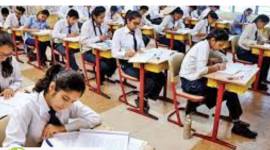Based on the most recent perspectives on how specifically modern students today choose to use technology and how their learning is affected if they use technology, it has been revealed that the use of modern equipment, technology, and software, as well as student learning and interactivity, is growing. They typically find it much more engaging and full of exciting regions when assisted by technology. It is incredibly simple and easy to send information, as well as quite efficient. This means that, when supported by new technology, our minds now appear to perform better in any element of life, and we’re talking about education here.
The reliance and dependence on such innovation, which simply makes life a simple, smooth journey, is now unavoidable even in schools, universities, and colleges. Technology will be used by today’s pupils in the following ways: Internet access and communication available 24 hours a day, 7 days a week The internet’s worth has soared by several orders of magnitude during the last decade. Its significance in the sphere of education can no longer be questioned. In light of the risks of fraud and drawbacks, using the internet is a gift to students. The internet is now integrated into practically every aspect of our lives. From TVs to game consoles to our phones, the internet is nearly everywhere. Students may discover a lot of aid, tutorials, and other types of support material on the internet, which they can use to enhance and improve their academic learning.
Using Visuals and Projectors
Visual pictures still have a strong appeal when compared to text. Another excellent example of technical application is the use of projectors and graphics to aid learning. Top colleges throughout the world today rely on dazzling PowerPoint presentations and projections to keep learning engaging and fascinating. The use of technology, such as projectors in schools and institutions, can increase engagement and interest while also increasing motivation. Students prefer to see appealing pictures and something that encourages them to think rather than just reading sentences. In addition, when it comes to technology, the learning component becomes really useful.
The Educational Sector’s Digital Footprint
When it comes to digital and education, the use of digital media in the educational sector has increased. This penetration has resulted in students being able to communicate with each other at all hours of the day and night, as well as a variety of forums where they may get help with various assignments. There are and will be more applications that will support pupils in their development and learning as the power of digital grows.
Technology-assisted online degrees are becoming increasingly popular
Virtual degrees have become a very common occurrence. For their preparation and qualifications, many choose to take online courses. Top institutions produce great online programmers with the use of various apps and the internet. This is a trend that will continue to expand if it receives more financing and recognition. Students who work and seek flexible study programmes are more likely to enrol in an online degree programme around the world.
The following are the most frequently mentioned barriers
- a lack of time;
- a lack of access;
- a lack of resources;
- a lack of competence; and
- a lack of support.
Butler and Sellbom (2002) and Chizmar & Williams (2001) both mention reliability as a barrier. Hardware problems, incompatible software between home and school, poor or slow internet access, and out-of-date software, which is largely available at school while students/educators have more up-to-date software at home, were all examples of reliability.
Impact on the positive
Enhanced Teaching and Learning
Technological advancements such as digital cameras, projectors, mind training software, laptops, Powerpoint presentations, and 3D visualisation tools have all proven to be valuable resources for teachers in assisting students in grasping concepts quickly.
Visual explanations of concepts must be grasped, making learning pleasant and enjoyable for kids. They are able to participate more actively in class, and professors have the opportunity to make their classes more interactive and engaging.
Globalization
When kids attend school in different sections of the state, they can use video conferencing to “meet” their peers without leaving the classroom. Some websites, link a group of students with a tutor from another nation to assist them learn a foreign language online.
No Geographical Restrictions
With the development of online degree programmes, physical attendance in the classroom is no longer required. Several overseas colleges have begun offering online degree programmes to students. Nowadays, distance learning and online education have become critical components of the educational system.
Negative aspects
Writing Abilities Deteriorating
Due to the widespread use of online chatting and shortcuts, today’s young generation’s writing skills have worsened significantly. These days, kids are heavily reliant on digital communication, which they have completely neglected as a means of improving their writing skills.
Increasing Cheating Incidents
Technological advancements such as graphical calculators, high-tech watches, small cameras, and other similar devices have become tremendous sources of exam cheating. Students can write formulas and notes on graphing calculators more easily and with fewer possibilities of getting detected.
For any queries related to parenting, schooling, or for any student-related tips, click here to check out our latest blogs









